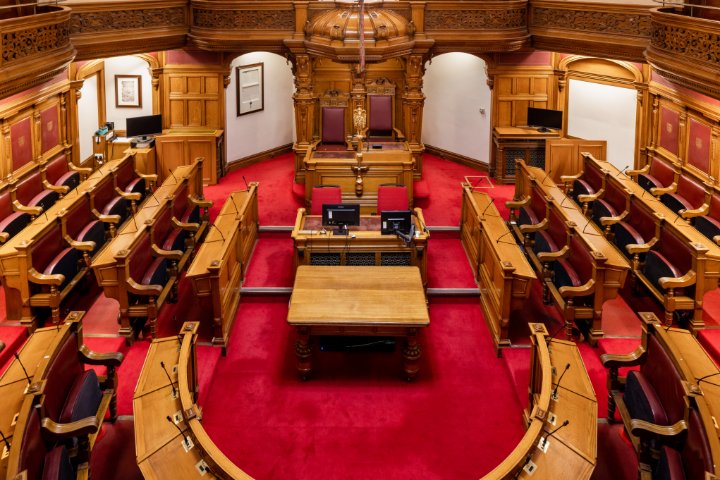Process to appoint a new Chief Minister following the Vote of No Confidence
17 January 2024

Following the Vote of No Confidence in Chief Minister Deputy Kristina Moore at the Tuesday 16 January meeting, the States Assembly continued its current sitting, debating the other items of Public Business on the order paper. The Chief Minister and her Council of Ministers remain in post until a new Council of Ministers is selected.
A new Chief Minister must be selected by the States Assembly within seven clear working days. This will be at a meeting scheduled for Thursday 25 January.
Nominations for the post must be submitted to the Greffier no later than 5pm today (Wednesday 17 January) and each candidate must have secured six elected Members to sponsor their nomination. Candidates must also submit a vision statement. This sets out the candidate's 'vision for a strategic policy and the manner in which the candidate would propose to discharge his or her responsibilities as Chief Minister.'
The process for electing a new Chief Minister
States members will debate and elect the new Chief Minister at the Thursday 25 meeting. After roll call and prayers, the Bailiff will ask the Greffier of the States to read out the nominations and draw lots to determine the order in which the candidates will address the Assembly.
Each candidate will address the Assembly for up to ten minutes, followed by one hour of questions from members. While each candidate is being questioned, the other candidates must withdraw from the Chamber and wait in an area where they cannot hear the proceedings.
Once all speeches and questions are concluded, an open ballot is held. Members must write their own name and indicate their preferred candidate on pre-printed ballot papers which are read out. If there are only two candidates, then the electronic voting system will be used.
A candidate who receives more than half of the votes will be selected as Chief Minister designate. If there are more than two candidates and no one receives more than half the votes, then the candidate with the lowest number of votes will drop-out and a new ballot will commence. This ballot process continues until such time as one candidate receives more than half of the votes.
Once the Chief Minister has been chosen, they do not take up their position until all 11 Ministers have been appointed. A meeting must be held two clear working days after the close of the session in which the Chief Minister was chosen, which will be Tuesday 30 January, in order to appoint the Council of Ministers.
The Chief Minister designate must provide the States Greffe with a list of their nominations for the Ministerial positions by 9.30am on Monday 29 January (these will be posted on the States Assembly website). At the meeting on 30 January, other nominations can be made by other Members in the Chamber.
Each Ministerial candidate gives a ten-minute speech and will then face twenty minutes of questions from Members. As with the Chief Minister voting process, the other candidates have to be outside the Chamber where they cannot hear proceedings. Even if there is only one nomination, the Chief Minister's candidate still has to make a speech and answer questions. The ballot follows the same procedure as with the Chief Minister.
If there should only be one candidate for each position of Chief Minister or Minister, while they will still give a speech and face questions in the Assembly, a ballot is not necessary, and they will be automatically elected.
Once all eleven ministers are appointed, the Chief Minister and their Council of Ministers start work on their new Strategic Plan and form a government.
These timings and the procedure are prescribed in Standing Orders.


.png?w=1200&h=630&ext=.png&width=370)
